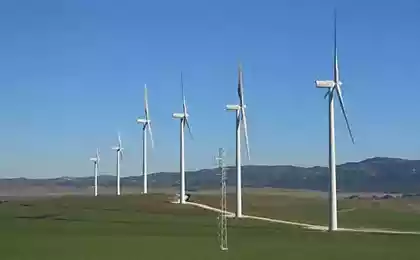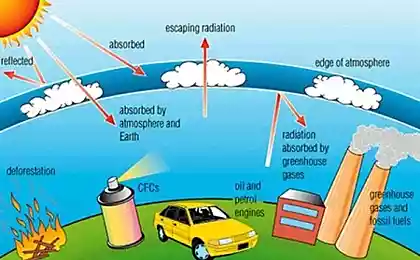464
The CO2 emissions of the power enterprises can be reduced to zero in less than 50 years
Carbon dioxide emissions associated with energy can be reduced worldwide by 70% by 2050 and reduced to zero in 2060. To such conclusion came the authors of the study from the International Agency for renewable energies (IRENA).
In order for these goals have been achieved, the share of renewable energy sources in energy supply is expected to increase to 65% in 2050. In 2015, the figure was 15%.

According to estimates IRENA, and the achievement of the targets will require a $29 trillion investment. This amount is equivalent to 0.4% of world gross domestic product (GDP), it is expected that the transition to clean energy will lead to growth of global GDP by 0.8% in 2050. The authors emphasize that the $29 trillion is addition to the $116 trillion, which is already incorporated in the baseline.
Researchers believe that reducing emissions in the energy sector by 2050 will reduce emissions of carbon dioxide around the world from 32 to 9.5 gigatonnes gigatonnes per year. Thus, according to the terms of the Paris agreement, the world must aim to limit global warming to two degrees above pre-industrial temperatures.
The authors of the study concluded that the achievement of the objectives of the agreement "is technically possible but will require significant policy reforms, other carbon pricing and technological innovation."

Scientists warn that the demand for energy sources by 2050, much will change. Total use of fossil fuels will be one third of the current level. The use of coal would decline most rapidly. Oil demand will be 45% from today's level.
It is expected that resources that have high production costs will no longer be used. Natural gas can be a bridge for greater use of renewable energy sources. However, as the authors point out, its role needs to be restricted is associated with a risk of dependence on such a path.
Now, the main source of energy in most countries is coal. According to CoalSwarm, aware of plans to increase the number of coal-fired power plants with 602 to 1008 in 11 countries of South-East Asia. Most companies will be built in Indonesia (176) and Vietnam (95). This can lead to the fact that in 2030, the emission of sulfur dioxide into the atmosphere in Indonesia will increase in three times in Vietnam — seven times. published
P. S. And remember, only by changing their consumption — together we change the world! ©
Source: news.sputnik.ru/finansy/bf1e2a3770b64a4a9cdbd4f90376c1079dce0508
In order for these goals have been achieved, the share of renewable energy sources in energy supply is expected to increase to 65% in 2050. In 2015, the figure was 15%.

According to estimates IRENA, and the achievement of the targets will require a $29 trillion investment. This amount is equivalent to 0.4% of world gross domestic product (GDP), it is expected that the transition to clean energy will lead to growth of global GDP by 0.8% in 2050. The authors emphasize that the $29 trillion is addition to the $116 trillion, which is already incorporated in the baseline.
Researchers believe that reducing emissions in the energy sector by 2050 will reduce emissions of carbon dioxide around the world from 32 to 9.5 gigatonnes gigatonnes per year. Thus, according to the terms of the Paris agreement, the world must aim to limit global warming to two degrees above pre-industrial temperatures.
The authors of the study concluded that the achievement of the objectives of the agreement "is technically possible but will require significant policy reforms, other carbon pricing and technological innovation."

Scientists warn that the demand for energy sources by 2050, much will change. Total use of fossil fuels will be one third of the current level. The use of coal would decline most rapidly. Oil demand will be 45% from today's level.
It is expected that resources that have high production costs will no longer be used. Natural gas can be a bridge for greater use of renewable energy sources. However, as the authors point out, its role needs to be restricted is associated with a risk of dependence on such a path.
Now, the main source of energy in most countries is coal. According to CoalSwarm, aware of plans to increase the number of coal-fired power plants with 602 to 1008 in 11 countries of South-East Asia. Most companies will be built in Indonesia (176) and Vietnam (95). This can lead to the fact that in 2030, the emission of sulfur dioxide into the atmosphere in Indonesia will increase in three times in Vietnam — seven times. published
P. S. And remember, only by changing their consumption — together we change the world! ©
Source: news.sputnik.ru/finansy/bf1e2a3770b64a4a9cdbd4f90376c1079dce0508
Students from California printed smart mirror
Created a material that changes its shape when exposed to light























